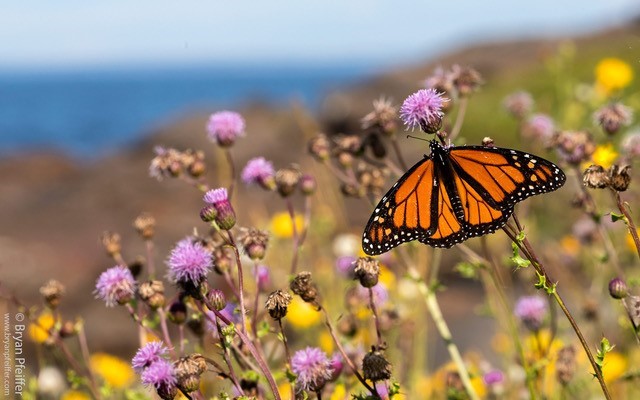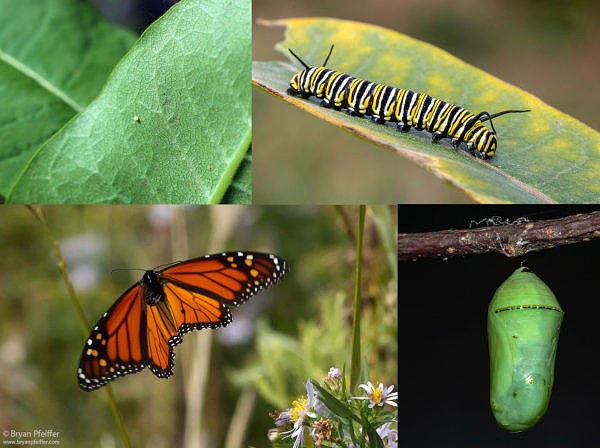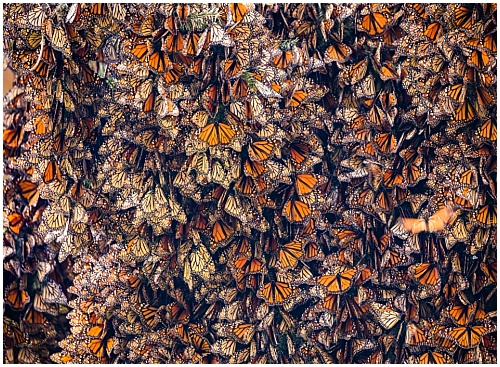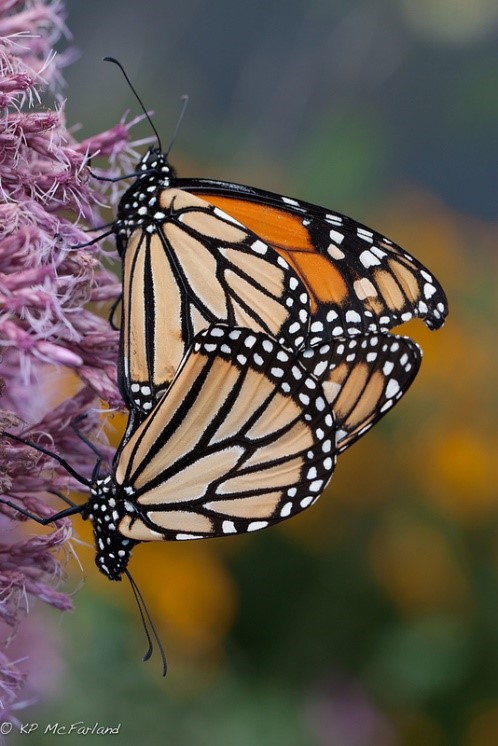May 20, 2021 at 3:16 pm
Butterflies are a fan favorite when it comes to fluttering invertebrates, and in addition to their beauty, they bring a number of benefits to our lives. Butterflies play an important ecological role as prey to a number of larger species such as dragonflies and birds and are vital pollinators for wildflowers. Additionally, some butterflies are considered indicator species; they are sensitive to environmental change, with populations quickly responding to stressors such as pollution, habitat loss, or climate change. Unfortunately, over the years, scientists and citizens have recognized a decline in many of Maine’s 118 butterfly species. Thankfully, there are small changes you can make to help support healthy populations of these wondrous insects.

Photo by Bryan Pfeiffer
MDIFW Deputy Commissioner Tim Peabody has found a way to help the state’s struggling monarch population, one of the state’s most beloved butterfly species now considered a species of Special Concern. Tim has been mowing fields in Waldo County for 30 years and has developed his own small-scale monarch conservation mowing program. Mindful mowing as Tim demonstrates, is an easy way to assist monarchs in one of their most critical life cycles. Tim leaves milkweed on the first cut of the season, typically in June, and now has a number of landowners that request he leave the milkweed or mow later in the season after nesting birds and monarchs have moved on.

Photo by Bryan Pfeiffer
While monarchs are a familiar butterfly to most Mainers, they live a more active and nomadic life than any realize. Monarchs are the only butterfly known to make a taxing two-way migration each year. As temperatures cool in October, the last generation of monarchs in Maine forego reproduction, saving their energy to travel south, as far as 3,000 miles to a small number of massive montane forest roosts in central Mexico. In later winter, the butterflies will mate and then begin a partial migration northward. It is the progeny of overwintering individuals that arrive in New England each year, typically arriving in Maine in late June. For this reason, milkweed is important for the survival of monarchs both in their summer breeding grounds and along their migration routes.

 While monarchs get a lot of attention, they aren’t the only butterflies experiencing trouble in Maine. Nearly one in five butterfly species are currently listed in Maine as a Species of Concern, Threatened, or Endangered, in many cases because of habitat and rarity of caterpillar host plants.
While monarchs get a lot of attention, they aren’t the only butterflies experiencing trouble in Maine. Nearly one in five butterfly species are currently listed in Maine as a Species of Concern, Threatened, or Endangered, in many cases because of habitat and rarity of caterpillar host plants.
Photo: A pair of breeding monarch butterflies. Photo by Kent McFarland
Here are some more ways you can help Maine’s butterflies and other pollinators:
- Make it easier on yourself and mow your lawn and meadows less often, allowing dandelions violets, and other wildflowers to provide food for butterflies, bees, and other pollinators
- Plant milkweed in a corner of your yard, they are native and will easily grow
- Go pesticide-free so pollinators are more attracted to your yard
- Purchase a Loon Conservation License Plate to help provide critical funding for Maine’s nongame, Endangered, and Threatened wildlife conservation efforts
- Become a citizen scientist and contribute photo observations of Maine butterflies and bumbles to iNaturalist – a free online application that MDIFW scientists monitor closely
- Learn more about MDIFW’s research and conservation efforts with invertebrates here!